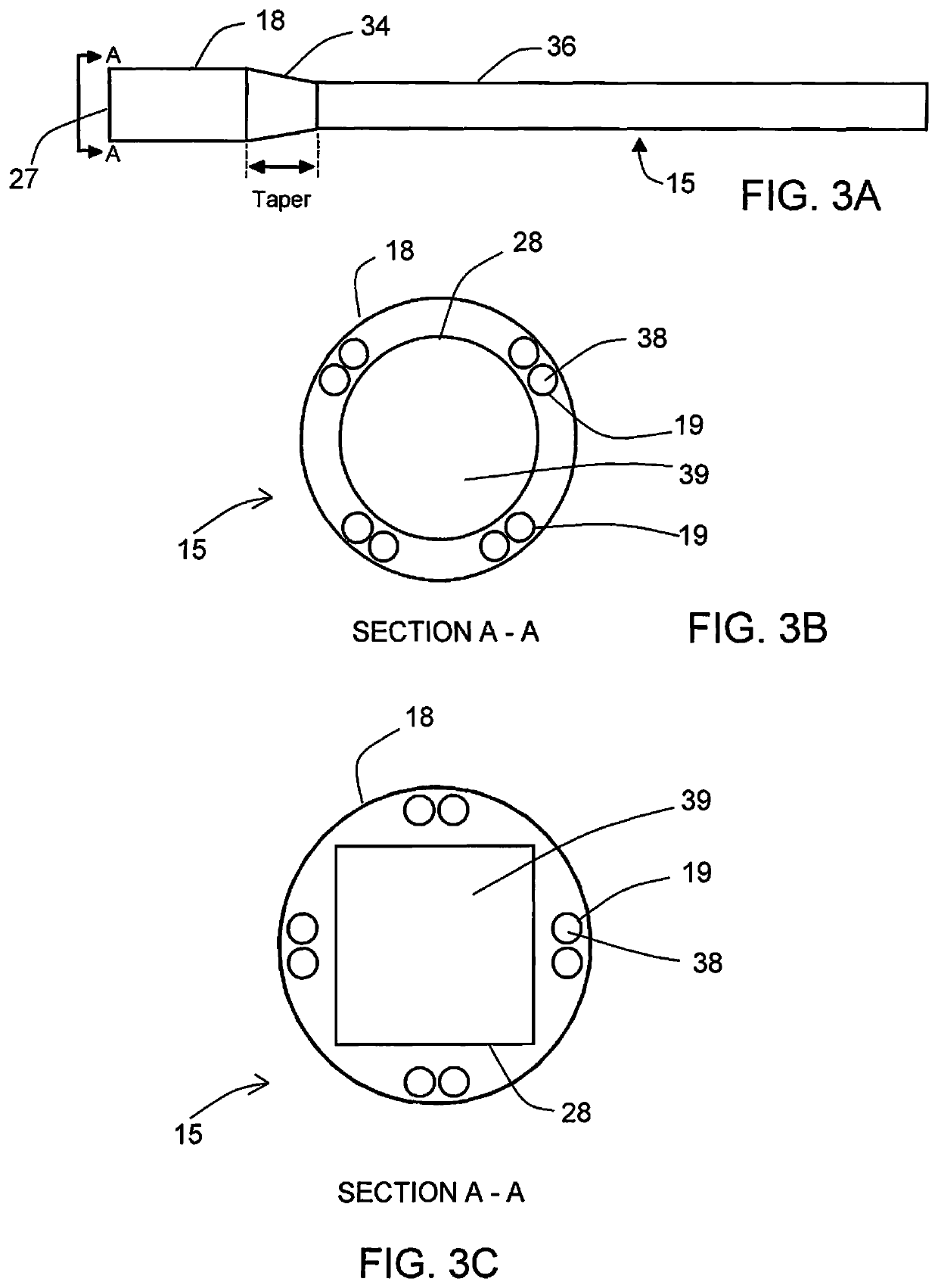Visually assisted entry of a Veress needle with a tapered videoscope for microlaparoscopy
a technology of tapered videoscope and veress needle, which is applied in the field of visual assistance of veress needle with tapered videoscope for microlaparoscopy, can solve the problems of inability to avoid inadvertent entry into an organ, injuring abdominal organs and major blood vessels, and blind placement of veress needle and then blind placement of the port with inserted trocar a much more risky technique, so as to increase the safety of the puncture and reduce the pain of patien
- Summary
- Abstract
- Description
- Claims
- Application Information
AI Technical Summary
Benefits of technology
Problems solved by technology
Method used
Image
Examples
Embodiment Construction
A. Preferred Changes to a Standard Veress Needle
[0048]Minimal changes can be made to a standard Veress needle 1 to accommodate the functionality of this embodiment of the proposed visualization stylet. Typically the movable inner sheath 2 of the Veress needle (the spring-action blunt inner-cannula that carries the insufflation gas) has a rounded distal tip 3 with a side port 6 for the insufflation gas 5 to pass through, as shown in FIG. 1A. This longitudinal sheath 2 will also be referred to as the gas-flow sheath. The rounded distal tip 3 of this sheath helps prevent any inadvertent damage during the first abrupt puncture of the abdominal cavity with the needle 4 portion of the Veress needle, while allowing for the passage of gas 5 from the side port 6 (after puncture through the abdomen). The passage and direction of gas flow through the side port 6 is indicated by the arrows 5 in FIG. 1A; standard use of a Veress needle insufflation.
[0049]The current embodiment of the visualizati...
PUM
 Login to View More
Login to View More Abstract
Description
Claims
Application Information
 Login to View More
Login to View More - R&D
- Intellectual Property
- Life Sciences
- Materials
- Tech Scout
- Unparalleled Data Quality
- Higher Quality Content
- 60% Fewer Hallucinations
Browse by: Latest US Patents, China's latest patents, Technical Efficacy Thesaurus, Application Domain, Technology Topic, Popular Technical Reports.
© 2025 PatSnap. All rights reserved.Legal|Privacy policy|Modern Slavery Act Transparency Statement|Sitemap|About US| Contact US: help@patsnap.com



